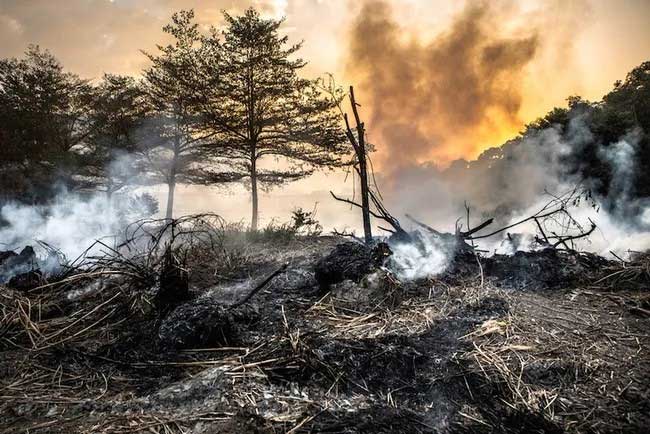AI can predict 'tipping points' for future disasters
Computer scientists have created an artificial intelligence (AI) program that can predict when catastrophic tipping points will occur and want to use it to forecast ecological collapse, financial crises, pandemics and power outages.
The researchers published their findings in the journal Physical Review X.
AI predicts accurately
Tipping points are sudden changes after which a local system or its environment enters an undesirable state from which it is difficult to recover. For example, if the Greenland ice sheet were to collapse, it would also reduce snowfall in the northern part of the island, causing sea levels to rise significantly and leaving parts of the ice sheet unable to recover.
However, the science behind these dramatic shifts is poorly understood and often relies on overly simplistic models, making accurate predictions difficult. Scientists have previously used statistics to assess the declining strength and resilience of systems through their increasing volatility.

A photo of a forest fire. (Photo: Jackal Yu|).
In search of a more accurate way to predict dangerous transitions, the researchers combined two different types of neural networks, or algorithms that simulate the way information is processed in the brain. The first breaks down complex systems into large networks of interacting nodes before tracking the connections between the nodes; and the second tracks how individual nodes change over time.
Because tipping points are hard to predict, knowing where to find them is equally difficult, making real-world data on sudden, important transitions scarce. To train their model, the researchers instead turned to tipping points in simple theoretical systems — including model ecosystems and asynchronous metronomes that, given enough time, start to move together. The AI accurately predicted what would happen, the researchers say.
Decoding the black box of wildfires, pandemics and financial crises
One challenge in predicting human-related systems is learning and reacting to one's own predictions.
Take urban traffic, for example: while congested routes can be easily identified, real-time congestion information can lead to chaos. Drivers can instantly change their routes, which can reduce congestion on some routes but simultaneously create congestion on others. This dynamic interaction makes prediction particularly complex.
To address this, the researchers say they will focus on parts of the human system that seem to be unaffected. In the example of the road network, this could be done by looking at routes that are more congested due to their basic design.
Using AI to capture these underlying signals is valuable in making predictions. While predicting such systems is challenging, it is worth it because major shifts in systems that involve humans can have even more serious consequences.
- People can fully predict the future
- Our brains tend to predict the future, do you realize that?
- Letter to the future from 2019: Dear fighters against climate change, hope is not over yet
- Guess the age and future story by ... urine
- Factors that help animals predict natural disasters
- What does the prophet 's prophet Vanga predict first?
- People can see the future?
- Nostradamus really predict the future?
- Do you want to know your future?
- Prehistoric stone models help predict future climate
- What does the foot reveal about you?
- Point G does not exist?
 The world's first sexless AI voice
The world's first sexless AI voice This cool t-shirt will make you invisible to AI
This cool t-shirt will make you invisible to AI AI can predict personality only through selfie photos
AI can predict personality only through selfie photos The world-famous chess player lost to Golaxy before, artificial intelligence 'made in China'
The world-famous chess player lost to Golaxy before, artificial intelligence 'made in China'